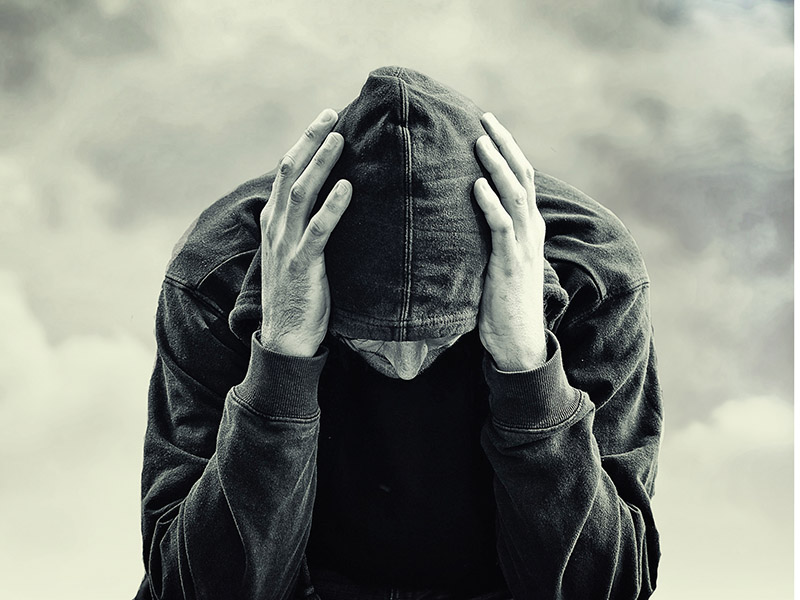In the first article in this four-part series, we discussed how addictive substances can wreak chemical havoc on the brain’s normal modus operandi. In this article, we examine how a variety of factors can determine how strongly drug abuse impacts a user’s life and behavior.
You may read part 1 here
When a drug addiction seizes control of a person’s decision-making, it may seem like an endless series of bad choices, each a collapse of sound judgment, like a row of dominoes toppling inexorably, one by one by one.
Yet in the medical field, addiction has for decades been primarily viewed as a disease, with chemical causes and effects in the brain, and it’s been included in the Diagnostic and Statistical Manual of Mental Disorders, the main reference book that physicians use to diagnose mental health disorders. True addiction, experts say, encompasses not only a keen physical urgency to use the drug and feel its desired after-effect, but a psychological effect as well. In the most severe cases, the addicted brain and its owner are robbed of the power of choice. According to one counselor who treats addicts, many would say that their predicament “doesn’t have anything to do with willpower; you’re incapable of choosing to use or not.”
When an addictive substance is used, the feel-good neurotransmitter dopamine (that the brain produces on its own) is released, flooding the brain’s prefrontal cortex, which normally helps us to filter out reckless impulses and make sound decisions. With repeated drug use, however, the brain soon adapts, producing less dopamine by itself and becoming singularly focused on one goal—to get more dopamine generated by the drug of choice. In this way the drug usurps the brain’s normal role as overseer of behavior.
Many factors determine a drug’s power over the user
Among those who treat addiction, however, there is growing awareness that many factors can increase or decrease the power of an addictive substance over a user’s behavior, that addiction is not a matter of black and white. Ben Newman, the clinical director at Newport News Behavioral Health Center, which provides both short-term and long-term residential treatment for teens who struggle with separate mental health disorders and substance abuse, asserts: “Addiction has long been thought of in a binary manner [based on the disease model]—either I’m addicted or I’m not—but the modern thinking is that it’s more of a continuum.”
He even cautions against broad use of the word “addiction,” which traditionally has been used among addiction counselors as it is defined in the 12-step recovery programs like Narcotics Anonymous. Based on the disease model, those programs define addiction as a condition that is “progressive, chronic and fatal,” warning that patients must never let down their guard with their drug of choice and think they are completely out of the woods. But in many cases, Newman says, substance abuse may not exactly fit that definition.
Laura Townsend, a family therapist at Bacon Street Youth and Family Services, a Williamsburg outpatient treatment center for teens and young adults, echoes Newman’s belief that there’s a broad spectrum of gray area in how addiction is manifested. “It’s not like someone just [makes a poor choice] and says, ‘I’m going to become an addict,’ she says. “It’s way more complex than that.”
Among the factors that can influence the likelihood of addiction is genetics; if a child has a parent who’s addicted, the child has a higher than normal chance of becoming an addict as well. But Townsend still emphasizes: “It’s not a given that because it’s in your gene pool, you’re going to have an addiction. It just predisposes you.”
In addition, environmental factors such as childhood trauma or a dysfunctional family can also play a role. When a child is less likely to be taught necessary coping skills, the quick fix, Townsend says, is to self-medicate. And, children with an addicted parent might try drugs because drug use seems to be the norm in their family. Teenagers, who are more susceptible to peer influence, are more likely to try drugs or use them regularly if that’s what their peers are doing.
On the positive side, Townsend says her program works closely with families to develop support for a drug-using teen. Other positive role models, like a coach or spiritual leader, can also be “resilience factors” against a teen’s likelihood of abusing drugs.
Frequency of drug use also helps determine the degree of a user’s addiction. Perhaps most important, though, is how early a person’s drug use begins. The earlier an individual starts to abuse drugs, the more dire his or her situation can become. As Townsend says: “If you interrupt the developmental process early [by starting to abuse drugs], and slow down your academic and social development, you’re going to be behind where you could have been. If you started early, you will have closed a lot of doors, given yourself fewer and fewer options for later in life.”
The next article in this series will feature personal stories from a few people who have struggled with addiction. For more information about treatment for drug addiction, Newport News Behavioral Health Center can be reached at (757) 888-0400, and Bacon Street Youth and Family Services can be reached at (757) 253-0111.







